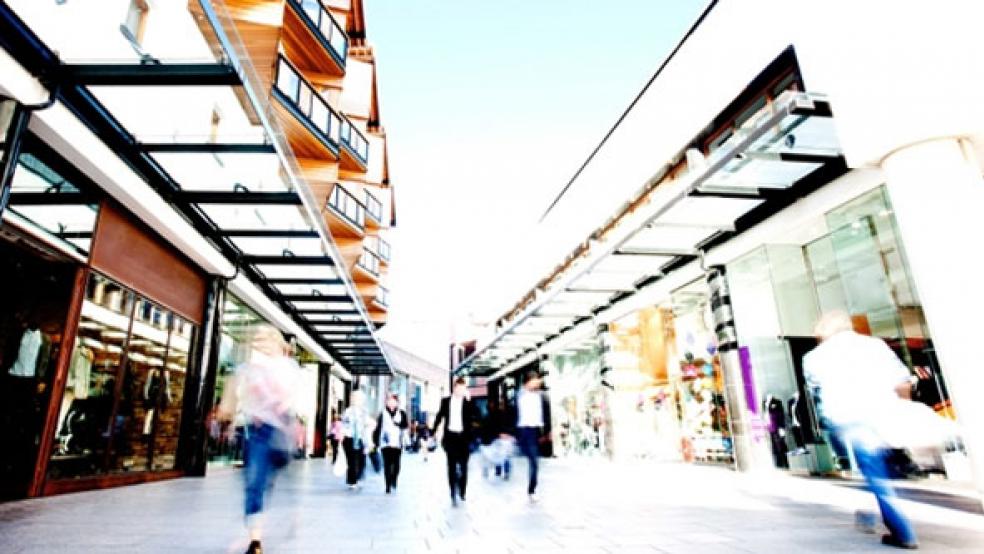As consumer spending goes, so goes the U.S. economy. The problem is that while U.S. consumer confidence, along with personal incomes, is on the rise, consumer spending is barely growing.
With roughly two-thirds of U.S. economic growth dependent on consumer spending, that’s a headwind for job creation—and most political incumbents. It should come as no surprise President Obama took to the road last week to meet with middle class Americans who are struggling to stay afloat.
The good news is that the economic outlook for average Americans isn’t as gloomy as it once was. The Conference Board Consumer Confidence Index ticked up to 85.2 in June, which was the highest reading since January 2008.
Related: Renewed Hope for Long-Term Unemployment Extension
According to Lynn Franco, Director of Economic Indicators at The Conference Board, June’s numbers were driven mostly by improving current conditions, particularly consumers’ assessment of the business climate.
“Consumer confidence continues to advance,” Franco said in a statement. “Expectations regarding the short-term outlook for the economy and jobs were moderately more favorable, while income expectations were a bit mixed. Still, the momentum going forward remains quite positive.”
At the same time, people are making more money. A recent report by the Department of Commerce’s Bureau of Economic Analysis says incomes increased 0.4 percent in May, marking the fifth month in a row that incomes rose. Disposable income is up nearly 2 percent from a year ago, after accounting for both taxes and inflation. The numbers suggest progress in the labor market is adding more dollar signs to workers’ paychecks.
Related: The Single Mom Dilemma—Low Pay, High Pressure
Here’s the paradox: people don’t trust the trend. They remember how much and how quickly their savings disappeared just a few years ago. Rather than running to buy new shoes or making a reservation for a dinner out on the town, Americans are, for the most part, saving this additional income. As of May, Americans were stashing away roughly 4.8 percent of their monthly income, putting the savings rate—personal saving as a percentage of disposable personal income—at the highest rate since September.
That may be good for their personal savings, but it’s a challenge for the economy. The government report found that Americans have stepped up their spending only slightly, with personal spending increasing by 0.2 percent from April to May.
Importantly, this slight uptick in consumer spending appears to be—at least partially—related to the weather. Namely, that people went shopping for the things they didn’t buy during the harsh winter months. Purchases of durable goods, such as cars, gasoline and auto parts accounted for more than 50 percent of the increase in May, while purchases of non-durables and services, decreased. Put simply, Americans are just window-shopping.
Fed Chair Janet Yellen is monitoring a variety of indicators to determine the best time to slow the Fed’s stimulus efforts, but expressed optimism at a June 18 news conference. "I think part of my confidence in the fact that we'll see a pickup in growth relates to the fact that I think consumer spending will continue to grow at a healthy rate," she said. "And, in part, that's premised on some pickup in the rate of wage growth so that it's rising greater—more than inflation."
Related: Unemployment Insurance Gets a Soap Box Hearing
No surprise, President Obama and the Democrats are stepping up their efforts to shape the narrative. Last week, Obama traveled to Minnesota, launching what the White House has dubbed a “Day in the Life” tour, whereby the president is essentially spending time on the road this summer in an attempt to cheerlead the economy back into spending.
His first stop was a lunch in Minneapolis with a woman named Rebekah, who’d written to him laying out the challenges facing her family. In her letter, she explained a situation that millions of Americans can relate to: More and more, she and her husband are working harder and harder just to get by.
The president is now encouraging average Americans like Rebekah to contact him personally. “I'll be doing more of these trips over the course of the summer, visiting people who have written me, to spend a day in their cities and towns,” wrote Obama in an email. “Because speaking directly with the folks I'm working for every day is the best way to help more Americans understand why growing opportunity in this country is so important.”
Obama ended his email with a P.S.: “You can send it by mail, too. You might even know the address already: 1600 Pennsylvania Ave. NW, Washington, D.C.”
Of course, it’s not as simple as a highly publicized lunch with the man who lives there.
His summer challenge is to convince Americans—especially those in the middle class—that it’s ok to go out and buy things. The question that hasn’t been answered: whether Americans are buying it.
Top Reads from The Fiscal Times:





